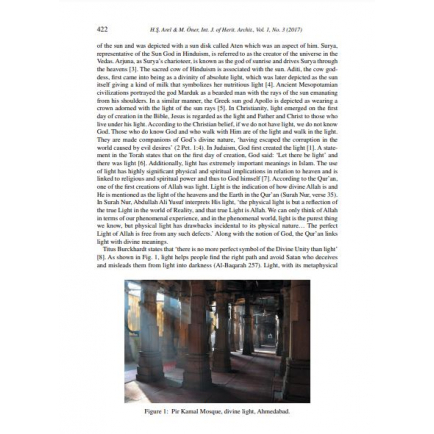
"USE OF DAYLIGHT IN MOSQUES: MEANING AND PRACTICE IN THREE DIFFERENT CASES"
Date Added
24/06/2022
Content Type
Documentary
Category
Other
Link to Content
Subject Area
Mosques
Author
H.S¸. Arel & M. Öner
Publisher Name
Islamic Heritage Architecture and Art
Year of Publication
2017
Description
Since the emergence of the first cultures, light has been used in various ways for illuminating indoor
spaces with sacred and symbolic meanings. Light has almost the same meaning in every religion: however, in Islam, we distinctly see different notions of light, such as divine light, divine unity and unity of
God which sets Islam apart from other religions. Mosques have the most perfect use of light in Islamic
architecture. There is no doubt that mosques are sacred spaces that give out an intense sense of the presence of God. Therefore, the use of light in mosques matters for both symbolic and spiritual reasons. We
see the most striking and generous use of light particularly in Islamic mosques because light is likened
to God, while darkness symbolizes Satan. Therefore, different ways of lighting are employed in order
to highlight these notions. In addition to having symbolic and spiritual meanings, the use of light plays
a role, in enhancing the decorative and aesthetic aspects of the interior spaces of mosques. Muslims
aim at highlighting simplicity, clarity and purity by letting light into the interior of mosques in different
ways. Wide spaces with no load-bearing walls, dome windows, colourful windows and grilled windows
are used in designing mosques to enhance the symbolic, spiritual and aesthetic sense of the interior. The
objective of this study is to present the meaning and practice of light in mosques. Different examples
of mosques are investigated here according to the ways in which they let the light inside as well as the
atmosphere they create.





